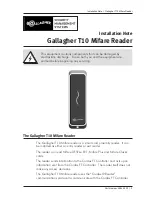
Network Settings
TPR User Manual
29
The URL will only be accepted by browsers that support IPv6.
Which Types of IPv6
Addresses are
available?
There are different types of IPv6 addresses. The prefixes of the IPv6
addresses provide information about the IPv6 address types.
• Unicast addresses can be routed globally. These addresses are
unique and therefore unambiguous. A packet that is sent to a
unicast address will only arrive to the interface that is assigned
to this address. Unicast addresses have the prefixes '2' or '3'.
• Anycast addresses are assigned to more than one interface. This
means that a data packet that is sent to this address will arrive
at various devices. The syntax of anycast addresses is the same as
the one of unicast addresses. The difference is that anycast
addresses choose one interface out of many.
A packet that is dedicated to an anycast address arrives at the
nearest interface (in line with the router metrics). Anycast
addresses are only used by routers.
• Multicast addresses allow you to send data packets to different
interfaces at the same time without a proportional increase of
the bandwidth. A multicast address can be recognized by the
prefix 'ff'.
Proceed as follows:
1. Start the TPR Control Center.
2. Select
NETWORK – IPv6
.
3. Configure the IPv6 parameters; see: Table 3
4. Click
Save & Restart
to confirm.
The settings are saved.
















































